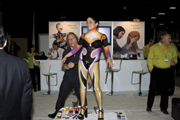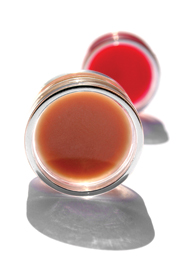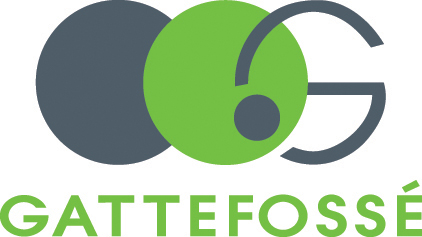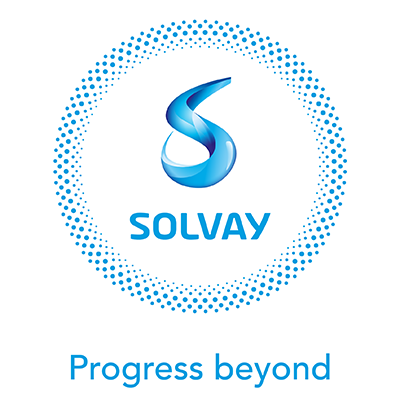Although the 2011 NYSCC Suppliers’ Day (10-11 May) was a bigger and better affair than last year’s event, its focus on formulating remained the same. Julia Wray reports from New Jersey
It’s 8.30am on the first day of 2011’s NYSCC Suppliers’ Day and in contrast to the same time last year – when the odd exhibitor may have arrived early to set up shop – the main entrance to The New Jersey Convention and Exposition Center is already buzzing. The organisers’ decision to extend show hours was clearly a smart one.
“By putting an extra half hour on the front and end of the first day we’re giving attendees more time to meet and conduct business,” commented Lipo Chemicals’ Brian Hom, chairman of the NYSCC.
“We wanted to do it for our benefit and for the attendees’ benefits because there are so many companies here that you literally need both days to try and see everybody,” added show chairman – and regional account manager, consumer care, Clariant – Jeffrey Crume.
Although the event’s attendance figures are, as yet, unpublished, the consensus among exhibitors at 2011’s show was that it was the busiest yet. “This is the heartbeat of the day when everybody’s going to come and it seems to be pretty busy to me,” said Rhodia’s commercial director Jesse Kreider. “I was over at in-cos and this seems busier to me.”
“So far it seems to be stronger and more consistent than previous years,” confirmed Hom. “Last year was a strong year given the bad economy. This year I think our attendance is as high, or even higher, than last year.”
Exhibitor figures were also up. “We filled the ballroom that used to be the café area with another 20 companies,” said Crume. “Every year we try and find a way to fit extra booths in if we can.”
Despite continued growth, both Crume and Hom are adamant that the show will remain in its current venue, at least for the time being. “In some ways you could say we have already outgrown our venue,” said Crume. “There are other venues locally, but we don’t think it’s in our best interest as a show to move. We don’t want a dramatic increase in booth rates because that would hinder the show in the long run.”
“We don’t want to charge $8,000 or $10,000 for a 10x10m space like some other shows do,” Hom told SPC. “We’re trying to keep it a good opportunity for smaller to medium sizes companies – of course we cater to larger ones as well – but we want to give a forum for small to medium sized companies to present their services, products, knowledge and intellectual property.”
“We’re trying to foster innovation and creativity, that’s the main goal for the show,” added Crume. “The more different exhibitors you have the more technology you will see. We’re looking for the chemists, the lab managers to come in and find solutions for their current and future projects and we’re hoping the exhibitors will find possible solutions for them.”
A helping hand
Indeed, the event featured a wide variety of solutions designed to make formulators’ jobs that little bit easier. Croda, for example, launched a moisturising system designed to provide cost and efficiency improvements in hair conditioners without sacrificing performance. According to marketing manager Regan Tillou, Croda’s Rejuvasoft [INCI: Quaternium-91 (and) behentrimonium chloride (and) myristyl myristate (and) cetearyl alcohol] can be formulated into a variety of hair conditioning systems (from 2% for detanglers to 8% for overnight repair systems) with the simple addition of deionised water, preservative and fragrance. “We’re rationalising from four ingredients to one ingredient on your warehouse floor,” she stated. “You also have increased production efficiency as it’s a one-part process.”
Rhodia meanwhile created two new blends offering “the efficiency of only sourcing and doing the QA and QC work on one raw material”. Miracare Plaisant is a natural surfactant blend for use in body wash, shampoo and liquid soap, while DV 9765, an anionic combination of sodium C14-16 olefin sulfonate and sodium trideceth sulfate, was developed as an economical alternative to SLES-2.
AkzoNobel, which debuted its Structure Cel line of sustainable, multifunctional polymers at in-cosmetics in March, launched a range of prototype finished products to coincide with Suppliers’ Day. It also created a formulator’s kit, offering cosmetic scientists some playtime with the new polymers.
“There are four products and they’re all a little bit different – they vary in their ability to build viscosity because some of them are more effective thickeners and they’re also modified differently so they’re going to interact differently with surfactants. You really have to have all four of them on your bench to play with to see which one is the best for your application,” Laurie Marshall, global marketing manager of styling and personal care at AkzoNobel told SPC. “So we’ve put together a formulator’s kit that will fit right onto your bench.”
Other companies – in particular those promoting hair styling ingredients – used on-booth display to interact with existing and potential customers. Dow Corning, for example, promoted its new two-in-one hair conditioning and styling ingredient, Dow Corning CE70-80 Smart Style, with “a display where people can actually come over and touch the hair tress” to “show that with Dow Corning’s latest product there is better curl retention”.
DSM and Lubrizol meanwhile showcased their latest hair styling polymers with help from professional stylists. DSM enlisted Anthony Lombardi from reality TV show Jerseylicious to demonstrate the effects of its Tilmar Fix A1000, while New York-based stylist John Rodriguez did the honours for Fixate Freestyle Polymer, part of Lubrizol’s Noveon Consumer Specialties portfolio.
“The more interactive you can be the better it facilitates discussion,” explained Hector Hernandez, research chemist, Noveon Consumer Specialties. “If you just have a poster or hand out it’s not so intriguing and you’re pressured by people around you to read faster. Here people can ask us questions and you can actually demonstrate what it is you’re talking about, which makes it a lot easier for formulators to identify with and enables them to ask the right questions.”
What the exhibitors said
“We’re seeing a lot of customers come by and there have been a lot of people who are influential in the buying process. We’ve seen a lot of old friends stop by!”
“This is the biggest trade show here in the US so you’ve got people who’ve travelled over from the west coast. Although they’ve got their own show in California, we’ve seen California-based customers here today.”
Carol Landi, general manager – North America and Kurt Burmeister, sales director, Sensient Cosmetic Technologies
“It’s definitely a year when a lot has changed – a lot of our suppliers have been acquired. But with regards to the suppliers we’ve seen here today, it’s been really interesting and a very positive reinforcement to see what they are doing with their collaborations. It [Suppliers’ Day] is bigger than it was last year, which is good for everyone. There are also more distributors now than there were a few years ago – and more coming to our booth, which I’m not sure is a good thing!”
Danielle DeWolf, marketing associate with US distributor DeWolf Chemical
“We’re meeting all the people we want to meet and having the kind of conversations that we want to have about our technology and about innovation in the market. We’ve had a mix of visitors. We’ve had global brand owners, regional brand owners from all over the Americas – north and south – and then you see the start-ups that have an interesting take on either an old ingredient or a new ingredient.”
Courtney Fretz, strategic marketing manager, home and personal care, The Dow Chemical Company
“This has never been a show for people outside of or entering the industry – it’s for people who are already in the industry. Unlike some other trade shows where people come to see what they maybe haven’t seen throughout the year, our customers here have seen everything already. But they’re here to consolidate relationships.”
Daniel Winn, business director, personal care, Inolex
“It’s the last hour and there are still a lot of crowds here, which is amazing as usually it’s dying down. And people are still arriving. I spoke to a customer who told us ‘we’ve just arrived here ten minutes ago’. For us the best thing about this show is we see all kinds of chemists from lab technicians to higher up management who’ve worked for around a dozen companies. Really all levels come through this show and it’s very nice and very different from a lot of other shows. This year we’ve seen a lot of new people being introduced to us, new hires.”
Carla Danca, account manager, AAK
Innovation and the economy
While Suppliers’ Day 2011 saw the US debut of several products introduced globally at in-cosmetics, the event proved an ideal launch pad for new ingredients from small to medium sized US-based suppliers.
One such example was Gelest, which promised a world first with its new SF skin friendly pigments and fillers. Claimed to be the only pigments to use bio-mimetic surface modification, they boast a functional silane coating containing hydroxyproline, a component of collagen and elastin.
“It’s going to help you achieve a reduction in dryness and increase affinity to the skin. It will also impart a really nice smooth feel to the skin and, for powders, it’s going to improve compressibility,” David Dick, sales manager, Gelest told SPC. “Primarily it’s for water-based products, anhydrous powders and skin care.”
Meanwhile, New Jersey-based multinational Evonik launched an extensive list of new products comprising an all-natural emollient, Tegosoft AC; a PEG-free thickener, Antil SPA 80; preservative- and sulfate-free sulfosuccinate Rewopol SB C 55; an extremely robust w/o emulsifier called Abil EM 1 80; Tegosoft XC, an emollient that stabilises UVA filters; granulated viscosity adjuster Tego Carbomer 141 G; and Tego Pep 4-Even, a tetrapeptide to balance skin tone.

According to Anna Howe, applied technology manager, personal care, North America at Evonik, the cosmetics manufacturing industry is now striking a balance between the frugality displayed during the economic crisis and pre-recessionary levels of innovation.
“A couple of years ago in 2008 and 2009 we had more discussions on pricing – customers wanted to get from point A to point B with more economical systems,” she noted. “So it was still creative, but there wasn’t really that urgency, whereas now it’s a better balance. Of course they want to look at economy, but they are focused on performance.”
Several new launches claimed to be cost effective as well as efficacious. Among Abil EM 1 80’s benefits are that it functions at a third of the use level of its counterpart EM 90 (at 0.5%) and is cold processable.
“We always offer cold processing versus hot, because although it’s not a direct relationship to price per kilo, when you’ve put it through the plant, the overtime it takes to make something in two hours versus eight is a huge saving,” said Howe.
Similarly, Ecosmooth Satin – a new non-cationic conditioning ingredient for body care applications from Dow Chemical – is said to provide at least equivalent conditioning performance to cationic polymers at attractive price levels. “Because of the way the polymer is created it has a much higher solids level and is much more efficient in use, so as a result you can use less of it making it more cost effective,” explained Courtney Fretz, strategic marketing manager, home and personal care at Dow Chemical.
“This product is targeted towards R&D for products designed for rapidly growing economies, to help our customers take advantage of Asia and Latin America’s change from bar soaps to body washes,” she added. “Yes the show is located in the US, but it’s the US-based multinational companies who are the ones launching new products for the Asian and Latin American markets and they’re all here today.”
The visitors’ verdict
“It’s an excellent show, with a very friendly atmosphere. As someone who’s new to the cosmetics industry, it’s been useful to get a feel for the culture and to network. My main aim here has been to source suppliers and look for new technology and there’s been a lot of innovation, especially from smaller suppliers.”
Yong Zhu, senior staff scientist, product development, Procter & Gamble Cosmetics
“I try to come here every two years or so and this year’s show has been excellent. There were a lot of sample products and raw material demonstrations, which, as a formulator, I particularly liked.”
Amy Hart, senior colour chemist, AutumnHarp – contract manufacturer
“So far I’ve been to one other trade show to find suppliers, which was HBA in New York. At the moment I’m after companies supplying organic essential oils and shea butter. I’ve only just walked in but have already found a couple of suppliers that I’m interested in.”
Katya Hegg, founder & president, Lyeska – natural start-up brand
“It’s been very well organised. It’s not a big show like in-cosmetics but there is more focus on business and on technical issues, which is nice.”
João Sérgio Leão Carneiro, procurement, Unichem – visiting supplier
Beyond natural
Natural and organic remained a popular theme among exhibitors with several product launches boasting such claims. Gattefossé introduced J Rettenmaier & Söhne’s Vivapur Cos range of wood fibre-derived alternatives to synthetic aqueous stabilisers, while Active Organics launched Actifoliate, a patent pending fungal extract combining peptides derived from Mucor miehei and polysaccharides from cell wall components from Mucor rouxii said to impart irritation-free, intense exfoliation.
A new face on the cosmetic ingredients scene was Kemin – Suppliers’ Day 2011 marked the company’s first time as an exhibitor at a personal care trade show. An established name in nutraceuticals and pharmaceuticals, Kemin launched its personal care division with a cosmetic ingredients line – comprising natural antioxidants Rosamox, Speramox and FloraGlo Lutein and natural emulsifier Lysofix – in March. And Suppliers’ Day saw the official launch of the company’s fermented soy extract broad-spectrum preservative MicroCurb.
“It seemed like a natural progression to go into personal care because if you look at the five products that we’re offering today all of those products have some existence in our sister companies,” Marsha Bro, marketing manager at Kemin told SPC. “We were taking something that we knew how to manufacture, that we knew a lot about and finding an application for it in personal care.”
NYSCC chairman Brian Hom noted that the appetite for natural and organic claims has changed somewhat in recent years: “A couple of years ago the big thing was 100% natural, organic this, organic that and reality has set in, because those kinds of products are less efficacious, less stable and much higher cost. Now what I’m seeing is that suppliers are starting to find that balance between efficacy and practicality, and natural.”
One company hoping to offer formulators such a balance is HallStar. Perhaps best know for its sun care solutions, HallStar was keen to publicise its recent move into naturals via its acquisition of exotic butters specialist BioChemica at the beginning of the year.

“It basically is a whole new stream of raw materials for us that we can work on and make even more interesting through various interpretations,” said ceo John Paro. “We’re hoping to create skin care ingredients with better emolliency and better stability – to get the benefits of the naturals in a more stable form.
“We’re creating a naturals group inside of the HallStar Company and we’ll position ourselves with that being our natural platform around the globe.” Paro stressed that BioChemica would not be HallStar’s last acquisition in the naturals arena – indeed, since the event, HallStar has announced the acquisition of B&T Srl, a specialist in the development of high performance natural ingredients based on olive chemistry.
If booths at Suppliers’ Day were anything to go by, the vogue for naturals lost ground to the wider mega-trend of sustainability. “Two years ago everyone was talking about natural and organic, and today on our booth and those of other suppliers I see the words sustainable and sustainability much more often than the word natural,” said Carla Danca, account manager at AAK.
As AkzoNobel’s Marshall elaborated: “One of the words we throw around internally is ‘eco premium’ and what ‘eco premium’ means is looking at an ingredient and asking ‘is it better for the environment in a variety of different ways?’ – not just that it’s more natural, but does it take less energy to make, is it being produced closer to where it’s going to be used so you can reduce transportation, or is it derived from renewable sources?”
The event itself was also a more eco-friendly affair, trialling a ‘paperless show’ using i-Pad technology developed in collaboration with Innovadex. Under the concept, every exhibitor and attendee was assigned an Innovadex ID number, which could be entered into i-Pads allocated to participating exhibitors. “It [the ID number] is directly linked to all the visitor’s pertinent contact information and you can send technical literature to those people as they’re standing at your booth as opposed to handing out brochures that may or may not make it back to their office,” Crume told SPC.
While the ‘paperless show’ concept will return in 2012, this year’s organisers stressed that there were no plans to change the show’s format drastically in any other way.
“We don’t have a platform for product-based presentations like other shows,” said Hom. “We want to foster hands-on, face-to-face conversations, not have a Steve Jobs standing on stage in front of four million people.”
And as a wise man once said, if it ain’t broke, don’t fix it.











